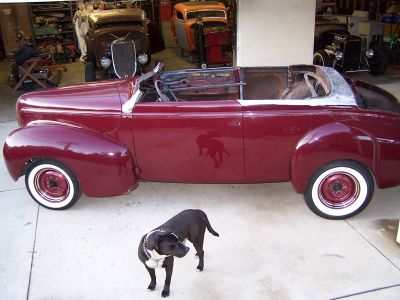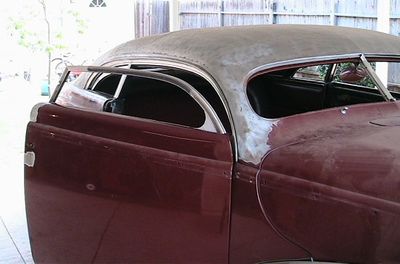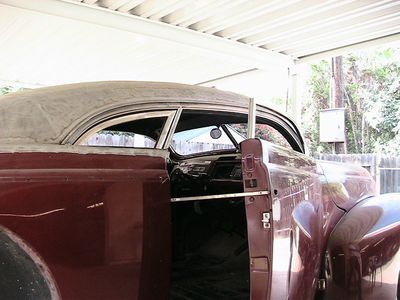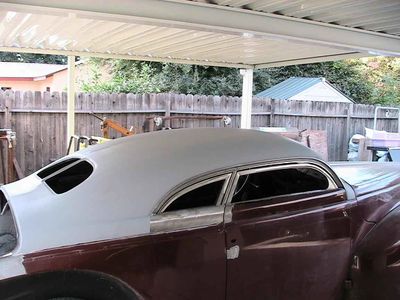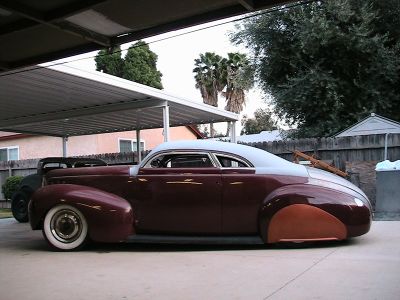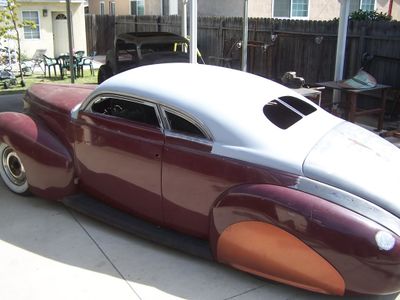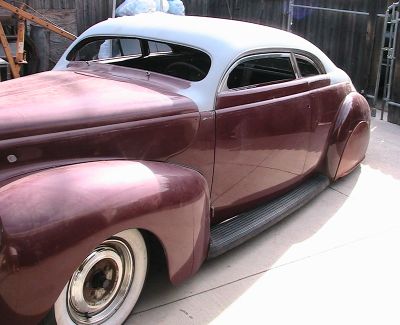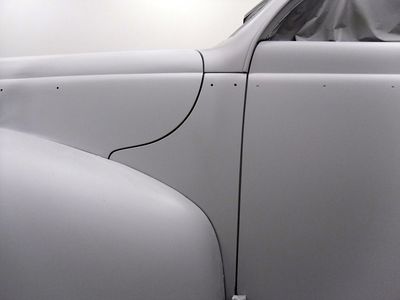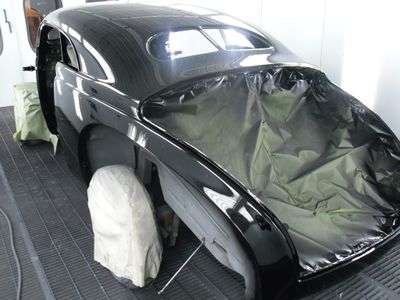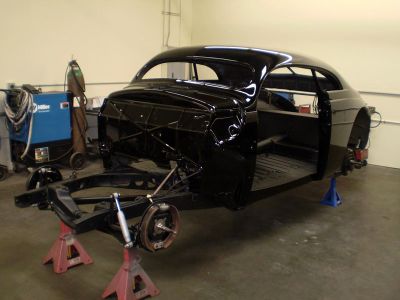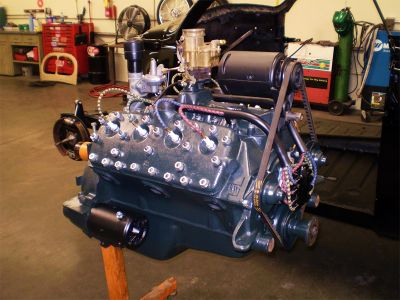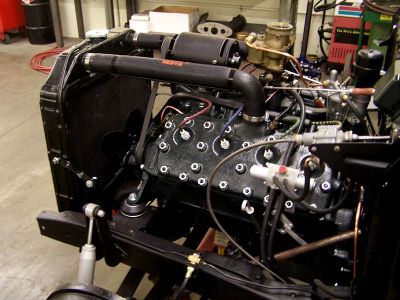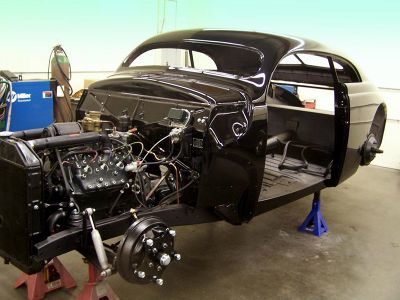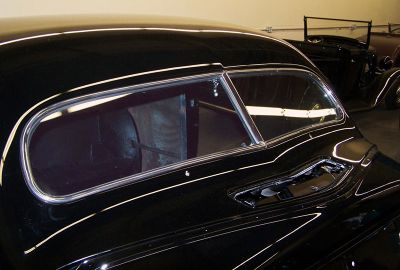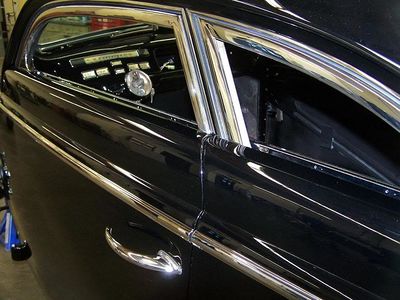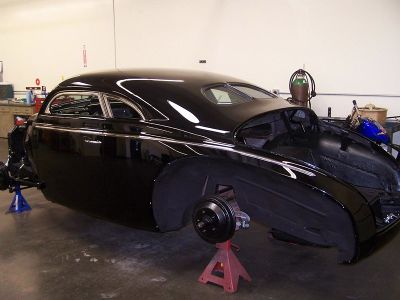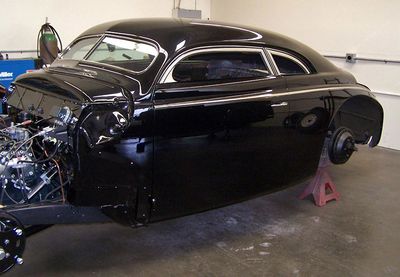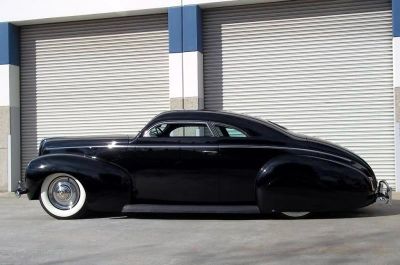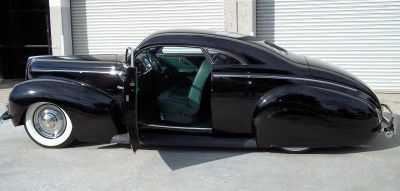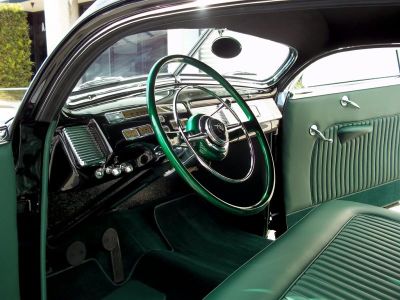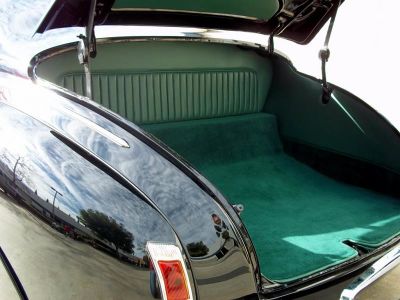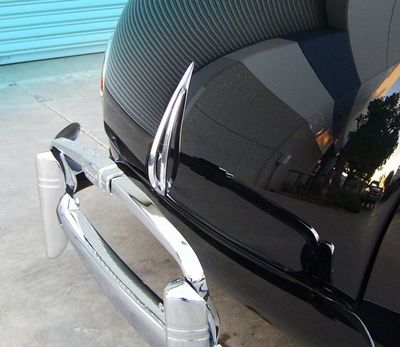Paul Hoffmann's 1940 Mercury
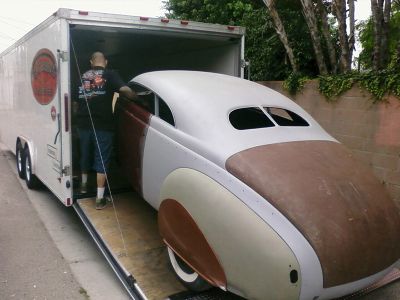
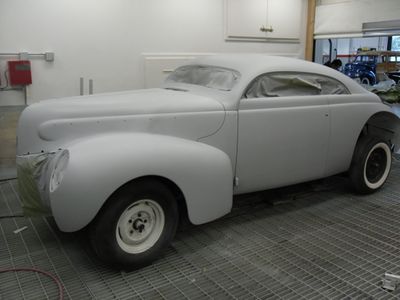














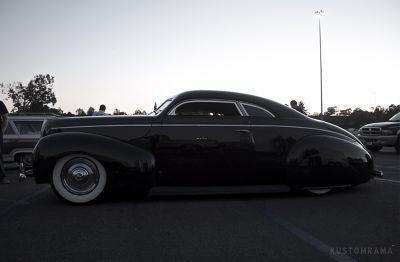

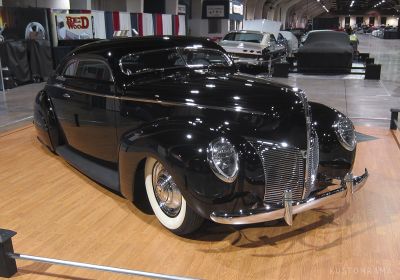

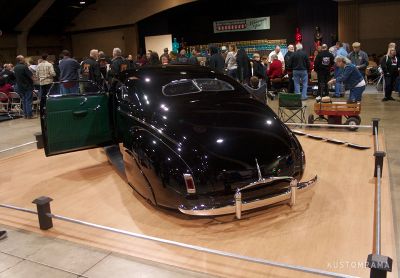
1940 Mercury Coupe restyled by Rudy Rodriguez of Fullerton Fabrication for Paul Hoffmann of Santa Barbara, California. Rudy has built several cars for Paul and before the project started, Paul bought a really nice 1936 Ford Three-Window Coupe that he wanted to base his build on. At the time Cole Foster was just completing Kirk Hammett's 1936 Ford Three-Window Coupe. Due to Cole's build the project didn't feel original enough, so Paul decided to sell the car. Rudy had told Paul about a 1940 Mercury project he had in his head and one day Paul asked Rudy if they should make reality of that vision. Rudy agreed and the project was started in 2006 by locating the nicest 1940 Mercury Coupe available. By starting the build with a car like this, no time would be wasted locating missing parts, or repairing old damage. An original California car with less than 50,000 miles on its odometer was located and acquired. Rudy and Paul talked for a long time before Rudy started to work on the Merc. The Merc was never meant to be a traditional custom car, but rather a smooth coupe that looked like it could have been a factory prototype that Ford Motor Company could have sent to Europe for the Paris Auto Show. According to Rudy, the stock roofline of the Merc can be reworked to make the car look just as elegant as any French Talbot-Lago or Delahaye of the same era. With this vision in mind, Rudy began to transform the Merc in to der Nachtfalter.[1]
The project was started by stripping the car for parts. This was before Rudy opened up his own shop in Brea, California, so all work in the beginning was done at Rudy's home. The intent was to go very low, so very little of the original Mercury roof could be used. Rudy chopped the top roughly 9 inches in the rear, and 5 inches in the front. In order to prevent the quarter windows from becoming too small after the radical chop, the side window openings, including the rain gutters, were extended further back into the roof. Rudy wanted the upper windshield line to match the side windows, so the windshield was raised 1.5 inches up in the roof. After welding up the new windshield area, Rudy began to work on the quarter windows. A common way to do the quarter windows on a chopped 1940 Mercury is to slide them in and out on a channel. Rudy has never been a fan of this method and decided to modify the stock window frames instead. Two sets of stock Mercury stainless steel window frames were used to make one set for the car. Each window frame, jewel molding and exterior trim piece was custom made to fit the new openings. The result of the tedious process was window frames that looks factory built. After completing the metal work on the roof and the window fit, Rudy reworked the grille and front end. The grille looks like a stock unit, but is hand made by Rudy. The new grille was chromed and each fin was hand painted flat silver. The hood latch was hand made and the bullnose was reworked to fit the hood perfectly. The hood was further shaved of emblems and the stock headlights were replaced by modified 1939 Mercury units. Rudy felt that the stock headlights ruined the flow of the car in addition to looking like they came of a VW bug, so these were scrapped. Rudy decided to keep the door handles, as they looked like little sculptures that fit the car perfectly. According to Rudy, "they give your eye a nice place to rest as it moves down the side of the car". Almost every panel on the car was modified or reworked. After completing the bodywork, the coupe was sent to Hotrods and Hobbies in Long Beach, California for a shiny black paint job. All panels were stripped to bare metal, and the gaps were worked to absolute perfection before the car left Rudy's shop. Dante ValVerde and Scott Bonowski of Hotrods and Hobbies block sanded the Merc tediously for months before the car was ready to receive its paint job.[1]
Back at Rudy's shop, the final assembly could begin. The stock Mercury flathead was kept. In order to achieve a stock factory prototype look, Rudy wanted the engine to appear stock and understated, but highly detailed. By March, 2010 the Columbia two speed rear end and engine was installed in the car. The frame was c-notched in the rear in order to lower the Merc to its proper stance. A three position spring setup was installed for ride height. As Rudy's vision is to make the Merc appear like a prototype show car, Appleton spotlights and Cadillac Sombreros never made it to Paul's Merc. Instead, a set of custom hubcaps designed by Kevin Lee were made out of cold rolled steel. The hubcaps were made to look like a combination of early Delahaye and a Talbot-Lago hubcaps. A heavily altered 1940 Mercury front bumper was used in the rear. The bumper guards were moved, and the overrider bridge was reworked to fit a 1940 California license plate perfectly. Both front and rear bumper brackets were chrome plated, and the inside of both brackets were painted flat silver for contrast. The trunk is opened by a latch under the rear bumper and a hood handle from a 1952 Porsche was used as deck lid handle. Further detailing includes a beautiful green leather interior by Bill's Auto Upholstery. Rudy decided before the build started that the car would be done in green leather as it reminded him of the interiors found in Bugattis and Delahayes from Europe. The Bottle Green leather was matched with German square weave carpet with leather piping. Green leather and carpet was also used in the trunk of the car. Black vintage Mercedes-Benz wool was used for the headliner. A lot of details like the garnish moldings, steering column, and shift mechanism were triple chromed. A 1946 Mercury steering wheel fit with a Ford horn ring and a modified Mercury horn button was placed on top of the chromed steering column. The original dash cluster was restored and the dash plastic pieces were custom made out of resin and chrome plated. Paul Cepeda helped out painting some of the dash plastics. The radio was removed and all interior window garnish moldings were custom fit and chrome plated. The windshield was mounted using original Mercury stainless steel moldings altered to appear stock. The original stainless trim was cut and re-welded to fit inside the new rubber. The result was front window molding that eliminated clips to hide the joints. All chrome was done by Buena Park Chrome. Pomona Glass Company made all of the glass.[1]
After four years of hard and tedious work the build was completed only a few days before the 2011 Grand National Roadster Show, where it made its debut and first public appearance.
References
Did you enjoy this article?
Kustomrama is an encyclopedia dedicated to preserve, share and protect traditional hot rod and custom car history from all over the world.
- Help us keep history alive. For as little as 2.99 USD a month you can become a monthly supporter. Click here to learn more.
- Subscribe to our free newsletter and receive regular updates and stories from Kustomrama.
- Do you know someone who would enjoy this article? Click here to forward it.
Can you help us make this article better?
Please get in touch with us at mail@kustomrama.com if you have additional information or photos to share about Paul Hoffmann's 1940 Mercury.
This article was made possible by:
SunTec Auto Glass - Auto Glass Services on Vintage and Classic Cars
Finding a replacement windshield, back or side glass can be a difficult task when restoring your vintage or custom classic car. It doesn't have to be though now with auto glass specialist companies like www.suntecautoglass.com. They can source OEM or OEM-equivalent glass for older makes/models; which will ensure a proper fit every time. Check them out for more details!
Do you want to see your company here? Click here for more info about how you can advertise your business on Kustomrama.




